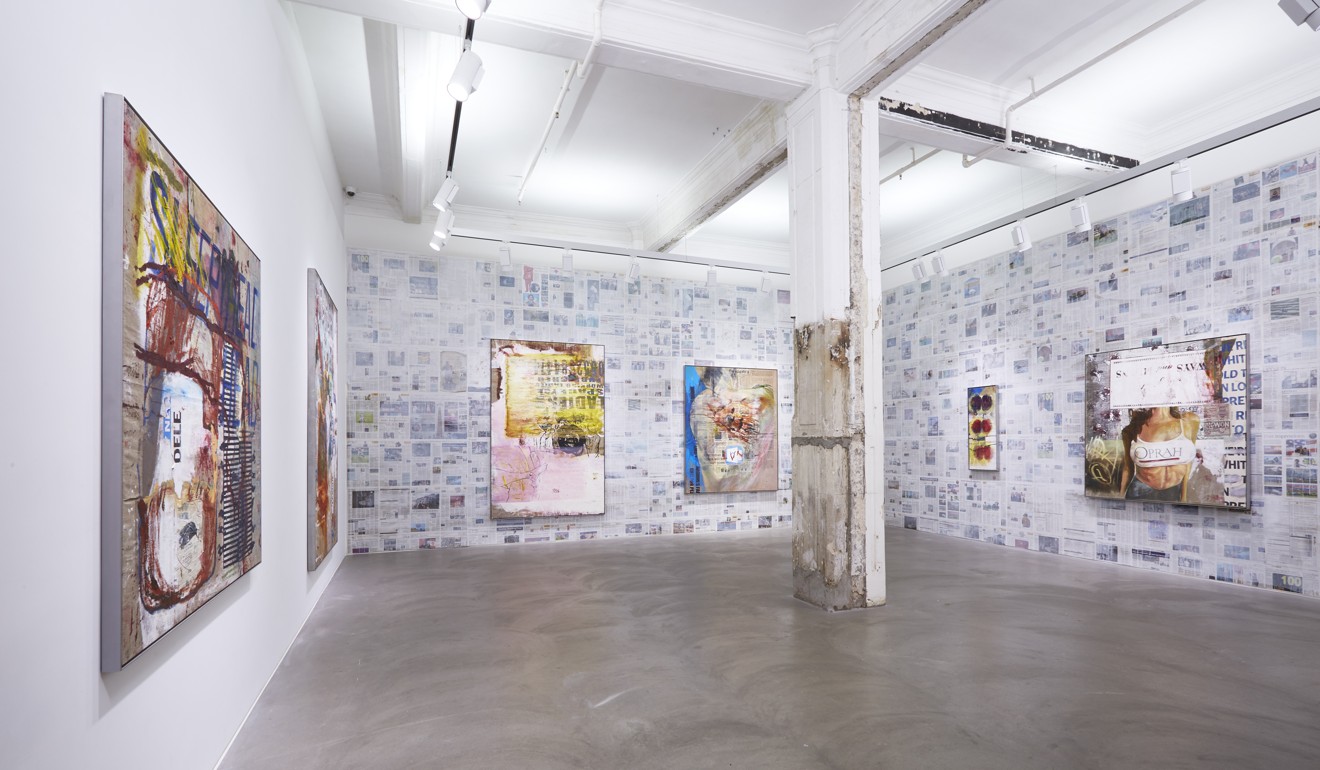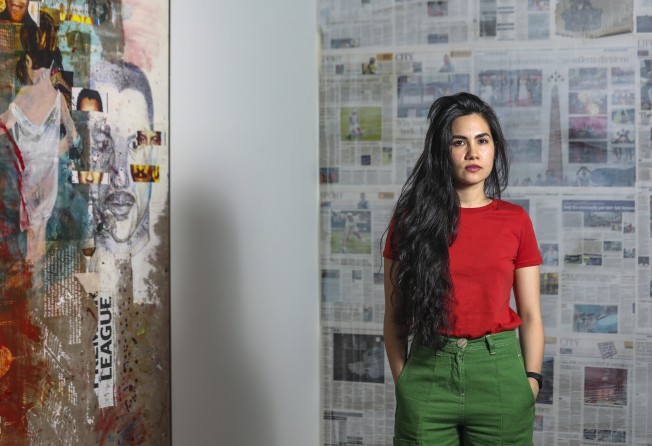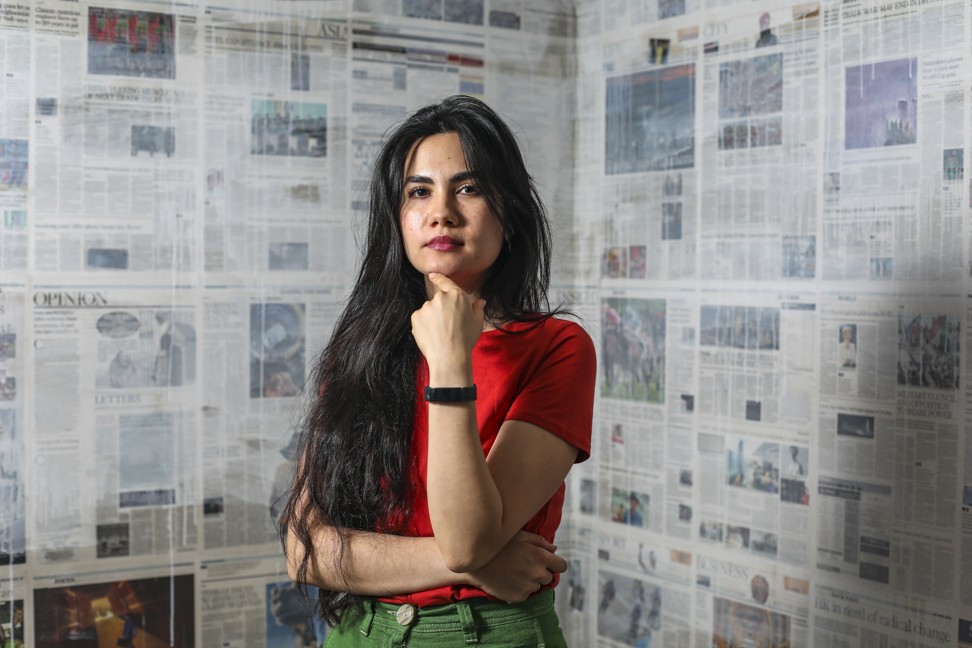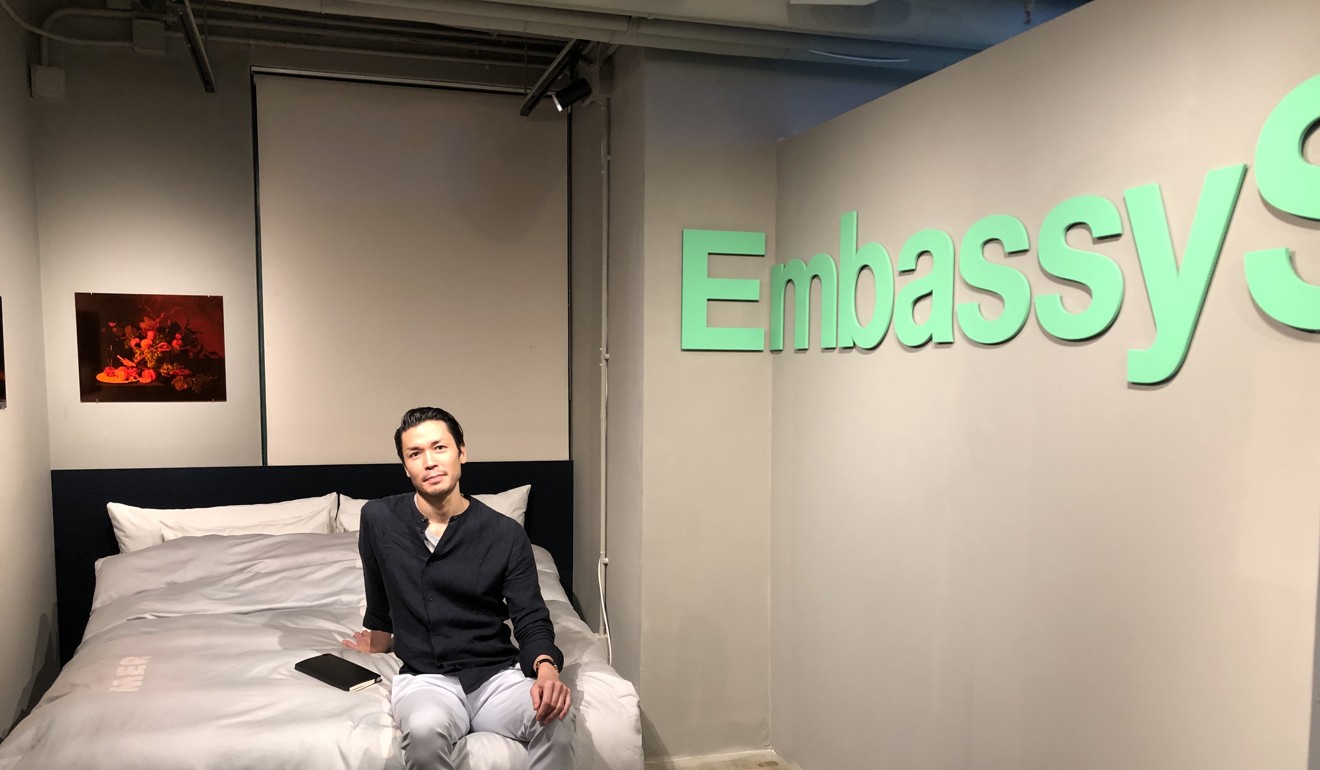
Artists wrestle with split identity in Hong Kong shows, and find resonance with city’s own struggle
- ‘The same urge to split from a body is resonating in the different places I have links with,’ says Mandy El-Sayegh, whose father is Arab and her mother Chinese
- Christopher K. Ho’s installation considers Hong Kong’s fate as a place caught between empires

Hong Kong, struggling to find its identity amid a crescendo of protests, is a stimulating backdrop for two exhibitions of art that explores what it means to straddle cultures and nationalities.
Mandy El-Sayegh, a 34-year-old artist based in London, is having her first Asia show in the city, which has been wracked by violent clashes over a proposed law change that would allow Hongkongers to be extradited to jurisdictions including mainland China. The tension between parts and the whole in her art finds striking resonance in the tension between the city and its motherland.
“Dispersal”, her exhibition at Lehmann Maupin’s Hong Kong gallery, includes a number of large mixed-media paintings reminiscent of Robert Rauschenberg’s “combines”, laden with symbols taken from popular culture, the media and references to personal history.
These are hung on walls covered from floor to ceiling with copies of the South China Morning Post – a visual representation of the macro environment that shapes individual identities.

Nothing is explicit, leaving plenty of room for those who see it to find fragments of their own world.
Her work speaks to her family’s migration experiences. El-Sayegh’s mother, who is Malaysian Chinese, met her Palestinian father when they were both working in Sharjah, in the United Arab Emirates. When she was five years old, the family, including two siblings, moved to London.
The same tension, the same urge to split from a body, is resonating in the different places I have links with. In Hong Kong, it’s one body, two systems. In Palestine, it’s the two-state solution. In Britain, it is leaving the body of Europe
One of the pieces on show is called Indian Space/ Russian Guest (2019). An image of a man’s flayed back is painted on a montage of newspaper articles about scientific discoveries and the first Indian astronaut who joined a 1984 Soviet space mission. A symbol resembling the logo of Microsoft Outlook, the ubiquitous email program, hovers in the middle with the letters “L”, “V” and “R” written roughly in red across the perfect, digital “O”.
El-Sayegh explains that the newspaper clippings were kept by her father when he left Sharjah and so the events they describe must have meant a great deal to him. He is a computer repair technician who suffers from poor health and has always been drawn to pseudoscientific conspiracy theories, she adds. His is a paranoia that may stem from a need to find order in chaos and counter his sense of alienation, she says, which is not that dissimilar to what she does in art.
Her chaotic, seemingly incongruous references to history, technology, current affairs and cultural influences create unease; these are often bound together with either figurative or abstract representations of the human body. Her personal history explains some of her choices of material. Others – such as the eyes of actor Denzel Washington in another work – are relatable to any audience because of globalisation.

She says she feels keenly the way globalisation erases cultural specificity, and promotes national uniformity. “It feels apt to show in Hong Kong, because my mother has a relationship with China. Now that I am here, I realise that the same tension, the same urge to split from a body, is resonating in the different places I have links with. In Hong Kong, it’s one body, two systems. In Palestine, it’s the two-state solution. In Britain, it is leaving the body of Europe,” she says.
Globalisation and fragmented personal identity are themes that also appear in Christopher K. Ho’s timely exhibition about Hong Kong.
“Embassy S ites” is the second show in the city by the New York-based, Hong Kong-born Ho, who had a residency last year at de Sarthe Gallery. It resulted in an exhibition called CX888, the code of a Cathay Pacific flight from Hong Kong to Vancouver, which was one of the most popular destinations for emigrants before the city’s return to Chinese rule in 1997.
For so many years, global capitalism was anathema to the art world, but with the uptick in nationalism, globalisation suddenly seems filled with positive possibilities
This new show has to do with flying too. It is a site-specific exhibition commissioned by Tomorrow Maybe, the art space inside the Eaton HK hotel in Jordan, and is filled with installations designed to trigger nostalgic, historical associations as well as reflections on the current debates about nationality and migration.
The first thing you notice is the overpowering sound of an aeroplane taking off – the same noise pollution that this neighbourhood put up with when the old Kai Tak Airport was in operation. The space itself has been turned into a hotel room, with installations that include pointers to key moments affecting Hong Kong’s fate and the way the city has always been caught between different empires, something he says its current, postcolonial struggle highlights.
There is a stack of volumes of the 1984 edition of the Encyclopædia Britannica, with an entry on the Sino-British Joint Declaration on Hong Kong’s return to China; a letter from Emperor Qianlong to Britain’s King George III from the 18th century that refused Britain’s request for more trade and port access (a development that would eventually lead to Britain’s takeover of Hong Kong); and the Christmas postcard from the White House in 1972, the year US President Richard Nixon went to China.

The exhibition’s title, with its deliberate gap between the letters “s” and “i”, is displayed on the wall in the green colour and type of the WhatsApp messaging system’s logo.
If you fill in the gap with the letter “u”, the title becomes “Embassy Suites”, a brand of hotels owned by Hilton, which is significant because in Ho’s eyes Hilton Hotels, like the one that stood in Hong Kong’s Central business district until 1995, were often the heart of US information gathering abroad.
The Hong Kong Hilton hotel even resembled an embassy in its solid architecture, he says, its fortresslike presence a sharp contrast to the apparent fragility of the US defences against foreign computer hackers, to which he refers with a bed covered in an American Express card number that Russian hackers found in one of Hillary Clinton’s emails ahead of the 2016 election.
In 2016, things really changed in the US in terms of attitude towards outsiders and immigrants like me
“Embassy S ites” is also a play on the suffix “ite”, meaning a type of person, Ho says. “I am thinking ‘embassy brats’, a term used to describe those with parents in the diplomatic corps and who grew up in different places without a root,” he says.
Through a gap in the wall, viewers see a silver-coloured Christmas tree. It is a symbol of Western cultural imperialism, but also a reference to the hotel being a self-contained world that can exist outside time and social context – a non-space that, oddly, can be freeing.
“In 2016, things really changed in the US in terms of attitude towards outsiders and immigrants like me. It feels very nationalistic and that’s what prompted me to come back to Hong Kong last year, a place my family left when I was very young,” he says.
“For so many years, global capitalism was anathema to the art world, but with the uptick in nationalism, globalisation suddenly seems filled with positive possibilities. Because the art world is so international, I believe it is in a position to really think about the possibility of a transnational identity and what it may look like, in anticipation [of] the rest of the world [moving] in that direction,” he says. “Otherwise, the alternative is a reversion to nationalism.”
Mandy El-Sayegh: Dispersal, Lehmann Maupin, Room 407, 4/F Pedder Building, 12 Pedder Street, Central, Tue-Fri, 10am-7pm, Sat 11am-7pm. Until Aug. 23.
Christopher K. Ho: Embassy S ites, Tomorrow Maybe, 4/F Eaton HK, 380 Nathan Road, Kowloon. Until Aug. 18.